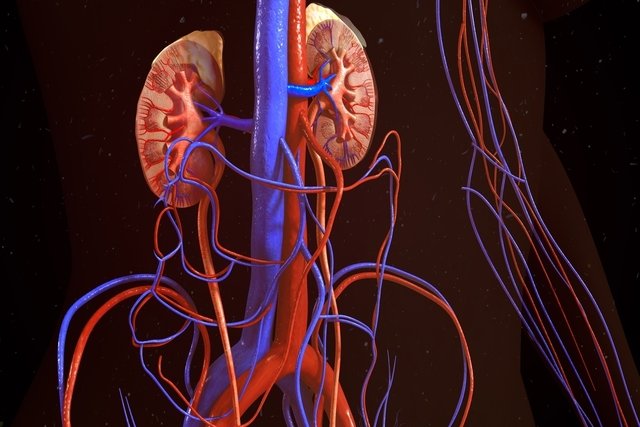The glomerular filtration rate, or simply GFR, is a laboratory measurement that allows the general practitioner and the nephrologist to evaluate the functioning of the person’s kidneys, this measurement being important for diagnosing and checking the stage of chronic kidney disease (CKD), which makes the GFR also essential for establishing the best treatment, if necessary.
In order for the glomerular filtration rate to be calculated, it is necessary to take into account the person’s sex, weight and age, as it is normal for GFR to decrease as the person ages and is not necessarily indicative of kidney damage or changes.
There are several calculations proposed to determine the glomerular filtration rate, however the most used in clinical practice are those that take into account the amount of creatinine in the blood or the amount of cystatin C, this being the most studied currently, since the The amount of creatinine may be influenced by other factors, including diet, and is therefore not an appropriate marker for diagnosing and monitoring CKD.

How GFR is determined
The glomerular filtration rate is determined in the laboratory through calculations that must take into account mainly the person’s age and gender, as these factors affect the result. However, for GFR to be calculated, a blood sample must be collected to measure creatinine or cystatin C, according to the doctor’s recommendation.
The glomerular filtration rate can be calculated both taking into account the concentration of creatinine and the concentration of cystatin C. Although creatinine is the most used, it is not the most recommended, as its concentration can be interfered by other factors, such as diet, physical activity, inflammatory diseases and amount of muscle mass and, thus, does not necessarily represent kidney function.
On the other hand, cystatin C is produced by nucleated cells and is regularly filtered in the kidneys, so the concentration of this substance in the blood is directly related to GFR, therefore being a better marker of kidney function.
What is it for
The glomerular filtration rate aims to check the functioning of the kidneys, as it takes into account the dosage of substances that are filtered in the kidneys and are not reabsorbed into the blood, being essentially eliminated in the urine. In the case of creatinine, for example, this protein is filtered by the kidneys and a small amount is reabsorbed into the blood, so that under normal conditions, concentrations of creatinine can be found in urine much higher than in blood.
However, when there are changes in the kidneys, the filtration process can be altered, so that there is less creatinine being filtered by the kidneys, resulting in a higher concentration of creatinine in the blood and a decrease in the glomerular filtration rate.
Normal GFR values
As the glomerular filtration rate can vary according to the person’s gender and age, the GFR values when the calculation is made with creatinine are:
- Normal: greater than or equal to 60 mL/min/1.73m²;
- Renal insufficiency: Menor que 60 mL/min/1,73m²;
- Severe kidney failure or kidney failure: when less than 15 mL/min/1.73m².
According to age, normally normal GFR values are:
- Between 20 and 29 years old: 116 mL/min/1.73m²;
- Between 30 and 39 years old: 107 mL/min/1.73m²;
- Between 40 and 49 years old: 99 mL/min/1,73m²;
- Between 50 and 59 years old: 93 mL/min/1,73m²;
- Between 60 and 69 years old: 85 mL/min/1,73m²;
- From the age of 70: 75 mL/min/1.73m².
Furthermore, GFR values may vary depending on whether or not the person is of African descent, with values considered normal in both cases exceeding 90 mL/min/1.73m².
The values may vary according to the laboratory, however, when the GFR is lower than the normal reference value for age, the possibility of kidney disease is considered, and it is recommended to carry out other tests to complete the diagnosis. , such as imaging tests and biopsy. Furthermore, based on the GFR values obtained, the doctor can check the stage of the disease and, thus, recommend the most appropriate treatment.
Bibliography
- NATIONAL KIDNEY FOUNDATION. Estimated Glomerular Filtration Rate (eGFR). Available at: <https://www.kidney.org/atoz/content/gfr>. Accessed on November 28, 2019
- GUYTON Arthur, HALL John. Textbook of medical physiology. 13th. Brazil: Elsevier, 2017. 353; 366-367.
- DALTON, R. N. Serum creatinine and glomerular filtration rate: perception and reality. Brazilian Journal of Pathology and Laboratory Medicine. Vol 47. 1 ed; 8-11, 2011
- MCANINCH, Jack W.; LUE, Tom F. Smith and Tanagho General Urology. 18 ed. Porto Alegre: Artmed, 2014. 56-58.
- MALTA, Deborah C. et al. Assessment of renal function in the Brazilian adult population, according to laboratory criteria from the National Health Survey. Brazilian Journal of Epidemiology. Vol 22. 2 ed; 2019
- BRAZILIAN JOURNAL OF CLINICAL ANALYSIS. Estimated glomerular filtration rate in adults: characteristics and limitations of the equations used. Available at: <http://www.rbac.org.br/artigos/taxa-de-filtracao-glomerular-estimada-em-adultos/>. Accessed on November 28, 2019
- BRAZILIAN SOCIETY OF NEPHROLOGY. Biomarkers in Nephrology. Available at: <https://arquivos.sbn.org.br/pdf/biomarcadores.pdf>. Accessed on November 28, 2019
- SZWARCWALD, Célia L. et al. Reference values for laboratory tests of cholesterol, glycosylated hemoglobin and creatinine in the Brazilian adult population. Brazilian Journal of Epidemiology. Vol 22. 2 ed; 2019

Sign up for our newsletter and stay up to date with exclusive news
that can transform your routine!
Warning: Undefined array key "title" in /home/storelat/public_html/wp-content/plugins/link-whisper-premium/templates/frontend/related-posts.php on line 12
Warning: Undefined array key "title_tag" in /home/storelat/public_html/wp-content/plugins/link-whisper-premium/templates/frontend/related-posts.php on line 13



